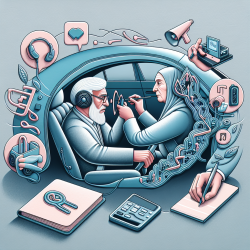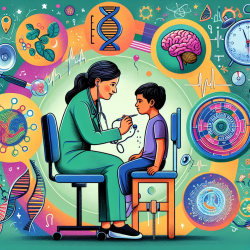As speech-language pathologists, understanding the unique communication challenges faced by older adults is essential to providing effective therapy and support. The research article "Older Adults Views of their Communication Difficulties and Needs while Driving in a Motor Vehicle" offers valuable insights into the specific communication difficulties and needs of older adults while driving. This blog aims to help practitioners improve their skills by implementing the outcomes of this research or encouraging further research in this area.
Key Findings
The study identified four major themes related to communication while driving:
- Concentration and Focus: Older adults reported that maintaining concentration and focus while driving is crucial, and conversation can often be a distraction.
- Importance of Hearing Conversation: Participants emphasized the importance of understanding speech in the vehicle for safety and navigational purposes.
- Impact of Missing the Conversation: Older adults expressed feelings of frustration, embarrassment, and exclusion when they could not follow conversations in the car.
- Responses to Communication Breakdowns: Strategies such as talking louder, repeating statements, and reducing noise were commonly used to facilitate communication.
Practical Applications for Practitioners
Based on these findings, practitioners can adopt several strategies to better support older adults in their communication needs while driving:
1. Educate Clients on the Importance of Clear Communication
Emphasize the importance of clear communication in vehicles for both safety and social reasons. Discuss the potential distractions and how they can impact driving performance.
2. Introduce Effective Communication Strategies
Teach clients strategies to improve communication in the car, such as:
- Positioning passengers in the front seat for better auditory and visual cues.
- Using clear and concise language.
- Minimizing background noise by turning off the radio or air conditioning.
- Encouraging passengers to speak louder and repeat statements if necessary.
3. Promote the Use of Assistive Technologies
Recommend the use of hearing aids or in-car amplification systems to enhance auditory input. Ensure that clients are aware of how these technologies can improve their driving experience.
4. Conduct Further Research
Encourage further research into the communication needs of older adults while driving. Investigate how different populations with hearing loss can benefit from improved in-car communication strategies and technologies.
Conclusion
Clear communication between drivers and passengers is vital for both practical and social reasons. By understanding the unique challenges faced by older adults and implementing effective strategies, practitioners can significantly improve their clients' driving experiences and overall quality of life.To read the original research paper, please follow this link:
Older Adults Views of their Communication Difficulties and Needs while Driving in a Motor Vehicle.










